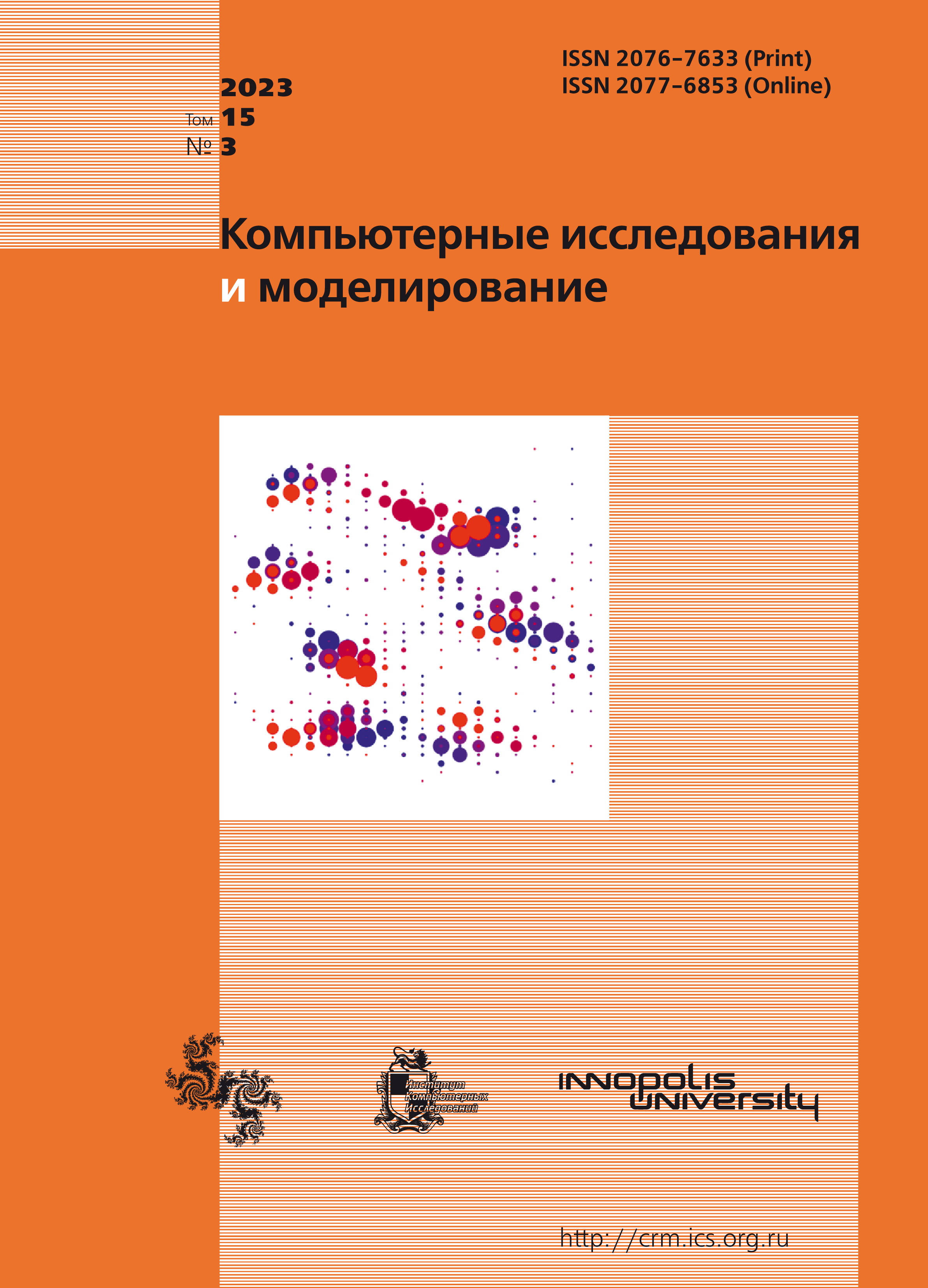All issues
- 2025 Vol. 17
- 2024 Vol. 16
- 2023 Vol. 15
- 2022 Vol. 14
- 2021 Vol. 13
- 2020 Vol. 12
- 2019 Vol. 11
- 2018 Vol. 10
- 2017 Vol. 9
- 2016 Vol. 8
- 2015 Vol. 7
- 2014 Vol. 6
- 2013 Vol. 5
- 2012 Vol. 4
- 2011 Vol. 3
- 2010 Vol. 2
- 2009 Vol. 1
Investigation of shear-induced platelet activation in arteriovenous fistulas for haemodialysis
Numerical modeling of shear-induced platelet activation in haemodialysis arteriovenous fistulas was carried out in this work. The goal was to investigate the mechanisms of threshold shear-induced platelet activation in fistulas. For shear-induced platelet activation to take place, shear stress accumulated by platelets along corresponding trajectories in blood flow had to exceed a definite threshold value. The threshold value of cumulative shear stress was supposed to depend on the multimer size of von Willebrand factor macromolecules acting as hydrodynamic sensors for platelets. The effect of arteriovenous fistulas parameters, such as the anastomotic angle, blood flow rate, and the multimer size of von Willebrand factor macromolecules, on platelet activation risk was studied. Parametric diagrams have been constructed that make it possible to distinguish the areas of parameters corresponding to the presence or absence of shear-induced platelet activation. Scaling relations that approximate critical curves on parametric diagrams were obtained. Analysis showed that threshold fistula flow rate is higher for obtuse anastomotic angle than for sharp ones. This means that a fistula with obtuse angle can be used in wider flow rate range without risk of platelet activation. In addition, a study of different anastomosis configurations of arteriovenous fistulas showed that the configuration “end of vein to end of artery” is among the safest. For all the investigated anastomosis configurations, the critical curves on the parametric diagrams were monotonically decreasing functions of von Willebrand factor multimer size. It was shown that fistula flow rate should have a significant impact on the probability of thrombus formation initiation, while the direction of flow through the distal artery did not affect platelet activation. The obtained results allowed to determine the safest fistula configurations with respect to thrombus formation triggering. The authors believe that the results of the work may be of interest to doctors performing surgical operations for creation of arteriovenous fistulas for haemodialysis. In the final section of the work, possible clinical applications of the obtained results by means of mathematical modeling are discussed.
Copyright © 2023 Salikhova T.Y., Pushin D.M., Guria G.T.
Indexed in Scopus
Full-text version of the journal is also available on the web site of the scientific electronic library eLIBRARY.RU
The journal is included in the Russian Science Citation Index
The journal is included in the RSCI
International Interdisciplinary Conference "Mathematics. Computing. Education"







